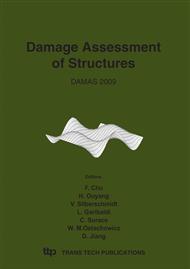p.175
p.181
p.189
p.195
p.203
p.211
p.219
p.229
p.237
Implementation of Reliability-Based Criteria for Structural Integrity Assessment of Existing Structures
Abstract:
This contribution discusses the implementation of reliability-based criteria including target safety level, residual life time, economical constraints and inspected present condition of the structure in order to assess its structural integrity. Thereby global failure is emphasized and aspects such as structural robustness and progressive collapse are implemented. Recent requirements in standards are reviewed and practical recommendations are provided. Case studies regarding re-qualification of existing structures are briefly presented, especially with respect to the aforementioned aspects. The summarized studies deal with a) reanalysis of deteriorated platforms in the North Sea and in West Africa subjected to extreme environmental actions and b) reevaluation of subway structures in Central Europe after damage due to flooding. Conclusions and suggestions for the reassessment of existing structures are finally given.
Info:
Periodical:
Pages:
203-210
Citation:
Online since:
June 2009
Authors:
Keywords:
Price:
Сopyright:
© 2009 Trans Tech Publications Ltd. All Rights Reserved
Share:
Citation:


